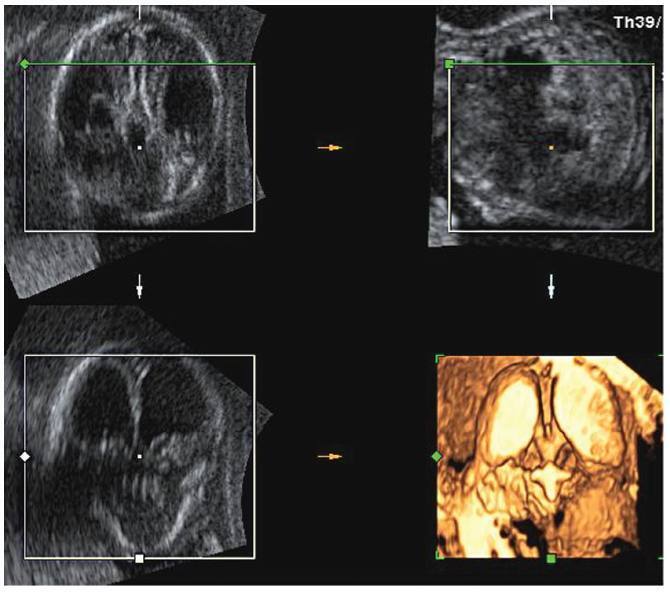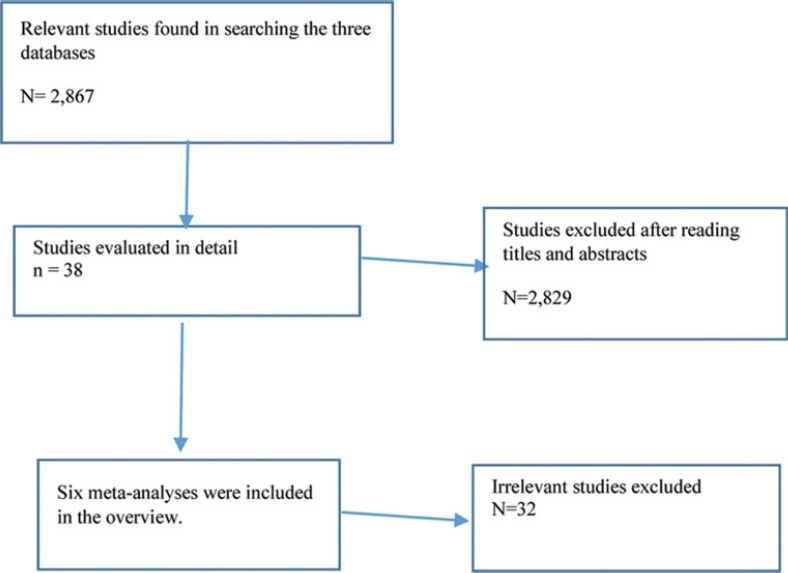-
Original Article07-11-2000
Morphological and Morphometric Aspects of the Uterine Cervix in Oophorectomized Rats after Copaíba Oil Application
Revista Brasileira de Ginecologia e Obstetrícia. 2000;22(8):489-493
Abstract
Original ArticleMorphological and Morphometric Aspects of the Uterine Cervix in Oophorectomized Rats after Copaíba Oil Application
Revista Brasileira de Ginecologia e Obstetrícia. 2000;22(8):489-493
DOI 10.1590/S0100-72032000000800004
Views136See morePurpose: to study the effect of copaíba oil on the uterine cervix of oophorectomized rats. Method: 120 female adults were used, divided into four groups: control, water, corn oil and copaíba oil. All animals were submitted to bilateral oophorectomy, and kept in cages for twenty days before applying the substances. These substances were applied by vaginal route at a dose of 0.3 ml, once a day until the predetermined day of sacrifice (7, 14 e 21 days). Results: the animals from the copaíba oil group showed on all days of the study exuberant, keratinous stratified squamous epithelium with about 10 epithelial cell layers and the chorion with conjunctive tissue, fibroblasts, collagen fibers, blood vessels and some leukocytes. Conclusions: The copaíba oil used in this experimental model promoted a thickening of the epithelium, which was keratinous stratified squamous, and epithelium increase was progressive along the study.
-
Original Article07-11-2000
Test-retest Reliability in Application of the Blatt and Kupperman Menopausal Index
Revista Brasileira de Ginecologia e Obstetrícia. 2000;22(8):481-487
Abstract
Original ArticleTest-retest Reliability in Application of the Blatt and Kupperman Menopausal Index
Revista Brasileira de Ginecologia e Obstetrícia. 2000;22(8):481-487
DOI 10.1590/S0100-72032000000800003
Views107See morePurpose: based on the knowledge that the reliability of an instrument is essential for a correct interpretation of the results of research, the purpose of the present study is to evaluate the reliability of one of the menopausal indexes more often used in clinical practice and research, the Blatt and Kupperman Menopausal Index (BKMI). Methods: the population consisted of 60 climacteric patients attended at the Gynecology Outpatient Clinic of the Lauro Wanderley University Hospital of the Federal University of Paraíba in João Pessoa city. The reliability coefficient was analyzed by the test-retest method, whose application was done on two different occasions with an interval of four weeks, without administration of medicines. Results: the variation of the score observed with the application of BKMI at the first measurement was 2 to 41, with a median of 18 and mean of 18.8 (± 10.76), while at the second measurement, the menopausal index was 20.2 (± 10.51), median 19, and values ranging from 2 to 39. Despite these results, a Speaman (r s) coefficient of 0.68 (p = 0.001), which is a coefficient of only moderate intensity, was observed. Conclusions: the test-retest reliability in the application of the BKMI shows that, although this instrument presented a statistically moderate reliability, the intensity observed does not represent a reliable measurement. Considering that a correlational study is only a type of screening of the quality of a measurement method, we concluded that other studies must be performed with the purpose of evaluating the reliability and the validity of the BKMI. It is possible that the attribuition of different values to the items of BKMI and the inclusion of symptoms directly related to the estrogenic defficiency, like symptoms of vaginal atrophy, would make the instrument more reliable.
-
Original Article07-11-2000
Bone Mineral Density in Postmenopausal Women with and without Previous Hysterectomy with Bilateral Ovarian Conservation
Revista Brasileira de Ginecologia e Obstetrícia. 2000;22(8):475-479
Abstract
Original ArticleBone Mineral Density in Postmenopausal Women with and without Previous Hysterectomy with Bilateral Ovarian Conservation
Revista Brasileira de Ginecologia e Obstetrícia. 2000;22(8):475-479
DOI 10.1590/S0100-72032000000800002
Views78See morePurpose: to evaluate the bone mineral density of postmenopausal women with previous hysterectomy and with bilateral ovarian conservation compared to a group of nonhysterectomized naturally menopausal women. Methods: this is a cross-sectional study of bone densitometry (Lunar DPX) in 30 menopausal women hysterectomized when in the premenopause compared with 102 naturally postmenopausal women. Results: the mean age, body mass index, color of the skin, smoking habits, educational level, menarche, parity and previous tubal ligation were similar in the studied groups. Bone mineral density average and the T-score of the three femural sites analyzed by the Bonferroni test did not show significant differences. The bone mineral density average and the T-score of the lumbar spine were analyzed by the Student t test and did not show statistical differences. Conclusion: these findings suggest that premenopausal hysterectomy with bilateral ovarian conservation does not cause an additional reduction in bone mineral content when evaluated in the postmenopause.
-
07-10-2000
Valor da Avaliação Propedêutica Objetiva e Subjetiva no Diagnóstico da Incontinência Urinária Feminina: Correlação com a Força Muscular do Assoalho Pélvico
Revista Brasileira de Ginecologia e Obstetrícia. 2000;22(9):597-597
Abstract
Valor da Avaliação Propedêutica Objetiva e Subjetiva no Diagnóstico da Incontinência Urinária Feminina: Correlação com a Força Muscular do Assoalho Pélvico
Revista Brasileira de Ginecologia e Obstetrícia. 2000;22(9):597-597
DOI 10.1590/S0100-72032000000900010
Views73Valor da Avaliação Propedêutica Objetiva e Subjetiva no Diagnóstico da Incontinência Urinária Feminina. Correlação com a Força Muscular do Assoalho Pélvico […]See more -
07-10-2000
Estudo Comparativo entre a Histopatologia e a Reação em Cadeia da Polimerase para o Diagnóstico do Papiloma Vírus Humano em Lesões do Colo Uterino de Mulheres Infectadas pelo Vírus da Imunodeficiência Humana
Revista Brasileira de Ginecologia e Obstetrícia. 2000;22(9):597-597
Abstract
Estudo Comparativo entre a Histopatologia e a Reação em Cadeia da Polimerase para o Diagnóstico do Papiloma Vírus Humano em Lesões do Colo Uterino de Mulheres Infectadas pelo Vírus da Imunodeficiência Humana
Revista Brasileira de Ginecologia e Obstetrícia. 2000;22(9):597-597
DOI 10.1590/S0100-72032000000900011
Views68Estudo Comparativo entre a Histopatologia e a Reação em Cadeia da Polimerase para o Diagnóstico do Papiloma Vírus Humano em Lesões do Colo Uterino de Mulheres Infectadas pelo Vírus da Imunodeficiência Humana […]See more -
Case Report07-10-2000
Mastitis due to Paracoccidioidomycosis: a Case Report
Revista Brasileira de Ginecologia e Obstetrícia. 2000;22(9):593-596
Abstract
Case ReportMastitis due to Paracoccidioidomycosis: a Case Report
Revista Brasileira de Ginecologia e Obstetrícia. 2000;22(9):593-596
DOI 10.1590/S0100-72032000000900009
Views89See moreParacoccidioidomycosis is an important systemic endemic mycosis in Latin America. This infection is usually acquired via inhalation of mycelial particles. Most infected subjects develop an asymptomatic infection, which is associated with various host-related factors such as sex, age, genetic, as well as characteristics of the infecting agent, mainly its virulence. It is a systemic pathology. A case of mastitis due to paracoccidioidomycosis is presented with the objective to demonstrate that elderly patients with a breast abscess should be submitted to biopsy.
-
Original Article07-10-2000
Analysis of Avoidable Mortality Among Women in Reproductive Age
Revista Brasileira de Ginecologia e Obstetrícia. 2000;22(9):579-584
Abstract
Original ArticleAnalysis of Avoidable Mortality Among Women in Reproductive Age
Revista Brasileira de Ginecologia e Obstetrícia. 2000;22(9):579-584
DOI 10.1590/S0100-72032000000900007
Views123See morePurpose: to evaluate the avoidable mortality among women in reproductive age, living in Campinas, SP, comparing two five-year periods: 1985-89 and 1990-94. Methods: death certificates of 3.086 women aged 10 to 49 years were studied, representing the total number of deaths during the period from January 1985 through December 1994. The criteria for avoidance were applied to these deaths using preventive, sanitary, early diagnosis and treatment, and mixed measures. The deaths were also classified as: with hardly avoidable causes, not well-defined causes and other causes. The specific mortality coefficient for each period of five years and the ratio between these coefficients were calculated. Results: there was a 20% increase in the avoidable mortality rate from the first to the second period. The main failure was observed among the group of avoidable causes by preventive and sanitary measures. The main increase in death causes by preventive measures resulted from AIDS. Among the causes of death avoidable by mixed measures, the increase of 50% in maternal mortality caused by abortion, as well as causes due to violence specially homicides, are emphasized. Conclusion: there was an increase in the proportion of avoidable death causes. Measures to prevent AIDS, abortion and to reduce violent deaths, specially homicides, should be political and social priorities in our Country.
-
Original Article07-10-2000
Treatment of Eclampsia: Comparative Study on the Use of Magnesium Sulfate and Phenytoin
Revista Brasileira de Ginecologia e Obstetrícia. 2000;22(9):543-549
Abstract
Original ArticleTreatment of Eclampsia: Comparative Study on the Use of Magnesium Sulfate and Phenytoin
Revista Brasileira de Ginecologia e Obstetrícia. 2000;22(9):543-549
DOI 10.1590/S0100-72032000000900002
Views78See morePurpose: to compare the efficiency between magnesium sulfate and phenytoin in the control of convulsions in patients with eclampsia and to evaluate the effects of magnesium sulfate and phenytoin on the maternal and perinatal prognosis in patients with eclampsia. Methods: this is a prospective, randomized and controlled study in which the results obtained with the use of anticonvulsive treatment in 77 women with eclampsia, treated with either magnesium sulfate or phenytoin, were analyzed comparatively. The drugs which were used in both therapeutic schemes were distributed in a one to one ratio, in randomly numbered boxes which presented similar characteristics. When a patient was admitted, a box was opened and its contents were given to the patient. Results: in the group whose patients were treated with magnesium sulfate, 19.5% had recurrent convulsions while in the group whose patients used phenytoin, 36.1% had new crises (p<0,05). The patients who were treated with magnesium sulfate showed a greater prevalence of postpartum hemorrhage (14,7%) than those to whom phenytoin was administered (2.7%) (p<0.05). In relation to the newborns, 17.0% of the group from mothers treated with magnesium sulfate presented respiratory distress as opposed to the group of newborns from mothers treated with phenytoin (11.8%), (p> 0,05). Conclusion: magnesium sulfate is shown to be more efficient than phenytoin in the control and the prevention of convulsions in patients with eclampsia. However, its utilization showed a higher prevalence of postpartum hemorrhage and respiratory distress. Phenytoin should be used in cases where the use of magnesium sulfate is contraindicated.
Search
Search in:
Tag Cloud
Pregnancy (252)Breast neoplasms (104)Pregnancy complications (104)Risk factors (103)Menopause (88)Ultrasonography (83)Cesarean section (78)Prenatal care (71)Endometriosis (70)Obesity (61)Infertility (57)Quality of life (55)prenatal diagnosis (51)Women's health (48)Maternal mortality (46)Postpartum period (46)Pregnant women (45)Breast (44)Prevalence (43)Uterine cervical neoplasms (43)




